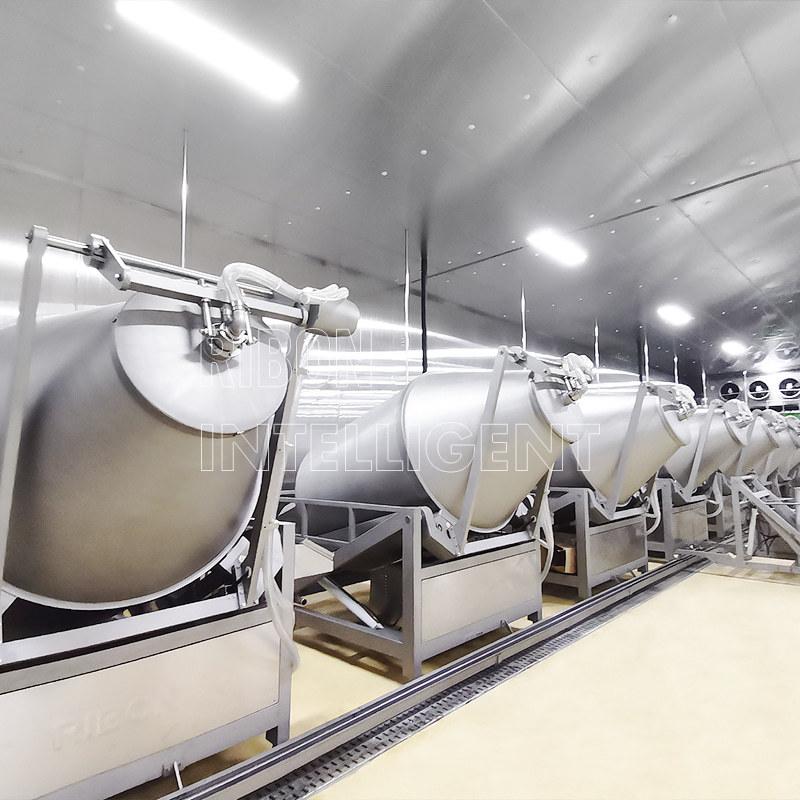In the ever-evolving world of culinary innovation, where chefs and home cooks alike are constantly on the lookout for tools to elevate their craft, a peculiar device has recently captured attention: the vacuum meat massager. While its name might evoke images of something more suited to a spa than a kitchen, this tool is revolutionizing how we prepare meat, promising juicier steaks, tender roasts, and flavor profiles that penetrate deeper than ever before.
What Exactly Is a Vacuum Meat Massager?
At first glance, the concept seems almost comical—a vacuum cleaner for your steak? But the vacuum meat massager is far from a gimmick. It's a specialized appliance designed to enhance the texture and taste of meats through a process known as vacuum tumbling or marination under pressure. The machine works by placing meat inside an airtight chamber, then removing the air to create a vacuum. This absence of atmospheric pressure causes the muscle fibers in the meat to expand slightly, allowing marinades, brines, or seasoning blends to seep into the tissue more effectively.
Unlike traditional methods like soaking or injecting marinade, which rely solely on time and surface contact, the vacuum meat massager accelerates absorption by manipulating the physical structure of the meat itself. Think of it as giving your protein a deep tissue massage—it loosens up tight fibers and creates microscopic channels for flavors to infiltrate.
Why Use One?
For professional chefs, precision and consistency are paramount. A vacuum meat massager offers unparalleled control over the marination process, ensuring every slice of chicken, pork chop, or beef brisket absorbs the exact amount of seasoning intended. For home cooks, it’s a shortcut to restaurant-quality results without hours of passive waiting. Imagine preparing a quick weekday dinner with meat that tastes like it’s been marinating overnight—because, in essence, it has.
Beyond flavor infusion, the vacuum massager also improves tenderness. By stretching the muscle fibers during the vacuum cycle, tougher cuts of meat become noticeably softer. This makes it especially appealing for budget-conscious cooks who want to transform inexpensive, tougher meats into melt-in-your-mouth masterpieces.
And let’s not forget about health benefits. Traditional marinades often require large quantities of oil or salt to achieve adequate penetration. With a vacuum system, less is more—you can use smaller amounts of these ingredients while still achieving bold flavors, reducing overall calorie and sodium intake.

How Does It Work in Practice?
Using a vacuum meat massager is surprisingly straightforward. First, you place your chosen cut of meat in a compatible container or bag along with your marinade or dry rub. Seal the container, insert it into the machine, and activate the vacuum function. Depending on the model, the process may take anywhere from a few minutes to half an hour. During this time, the vacuum cycles on and off, gently massaging the meat and encouraging even distribution of the marinade.
Once the session is complete, remove the meat and cook it immediately or refrigerate it for later use. Many users report noticeable differences after just one treatment—cuts are noticeably juicier, spices permeate further, and textures improve dramatically.
Who Needs One?
While the vacuum meat massager might sound like a luxury reserved for high-end restaurants or competitive barbecue enthusiasts, it’s actually becoming increasingly accessible to everyday home cooks. Compact countertop models are now available at reasonable prices, making them a practical addition to any kitchen arsenal. They’re particularly useful for those who love experimenting with different cuisines or hosting gatherings where impressing guests with standout dishes is key.
That said, if you rarely cook meat or stick to simple preparations, this gadget might feel superfluous. However, for anyone passionate about perfecting their grilling game, exploring global flavors, or simply getting the most out of their grocery budget, the vacuum meat massager could be a game-changer.
Beyond Meat
Interestingly, the applications of this technology aren’t limited to animal proteins. Vegetarians and vegans can also benefit from vacuum massagers when working with plant-based proteins like tofu, tempeh, or seitan. These foods often struggle to absorb marinades evenly due to their dense structures, but a quick spin in a vacuum chamber solves that problem beautifully. Even fruits and vegetables can be enhanced—for example, imagine infusing watermelon slices with balsamic vinegar or strawberries with liqueur for desserts that dazzle.





 English
English русский
русский Español
Español عربى
عربى










